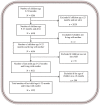Feeding practices and nutritional status of children age 6-23 months in Myanmar: A secondary analysis of the 2015-16 Demographic and Health Survey
- PMID: 30601848
- PMCID: PMC6314612
- DOI: 10.1371/journal.pone.0209044
Feeding practices and nutritional status of children age 6-23 months in Myanmar: A secondary analysis of the 2015-16 Demographic and Health Survey
Abstract
Nutritional deficiencies are a major problem among developing countries including Myanmar. They can occur in all age groups, but the impact is more severe among children age 6-23 months as this period is critical for child development, and irreversible damages can occur due to nutritional deficiencies. Proper infant and young child feeding practices are pivotal to tackle nutritional problems and to prevent irreversible consequences among children. To assess the current feeding practices and associations with nutritional status, we conducted a secondary data analysis using the 2015-16 Myanmar Demographic and Health Survey. Multiple logistic regression analysis was done adjusting for covariates and the results were presented by adjusted odds ratios with 95% confidence intervals. A total of 1,222 children age 6-23 months were included in this analysis. Twenty percent were stunted and 43% were moderately anemic. Only 16% of children received a minimum acceptable diet, 25% received diverse food groups, 58% were fed with minimum meal frequency, 85% currently breastfed, and 59% consumed iron-rich foods. Breastfeeding reduced the odds of being stunted. Male sex, perceived small birth size, mother with short stature, and working mother were significant predictors of stunting. Iron-rich food consumption was inversely associated with moderate anemia. Male sex and maternal anemia were also significant predictors of moderate anemia. The study concluded that stunting and anemia among young children in Myanmar are major public health challenges that need urgent action. While further prospective research is needed to determine the effect of feeding practice on linear growth, interventions such as iron supplementation, and nutritional education programs according to the World Health Organization complementary feeding guidelines could help prevent stunting and childhood anemia and might reduce their prevalence in Myanmar.
Conflict of interest statement
The authors have declared that no competing interests exist.
Figures
References
-
- UNICEF. WHO, World Bank Group. Levels And Trends in Child Malnutrition in UNICEF/WHO/World Bank Group Joint Child Malnutrition Estimates Key Findings of the 2016 edition. New York: UNICEF; Geneva: WHO; Washington DC: World Bank; 2017.
-
- WHO. Health at a Glance: Asia/Pacific 2016: Measuring Progress towards Universal Health Coverage. OECD Publishing, Paris: 2016.
-
- UNICEF. The state of the world’s children 2015: Reimagine the future: Innovation for every child. New York: UNICEF; 2014.
-
- UNICEF. Multiple Indicator Cluster Surveys (MICS). About Datasets Five-year strategic plan for child health development in Myanmar (2010–2014). WHO UNICEF, 2011.
MeSH terms
LinkOut - more resources
Full Text Sources


